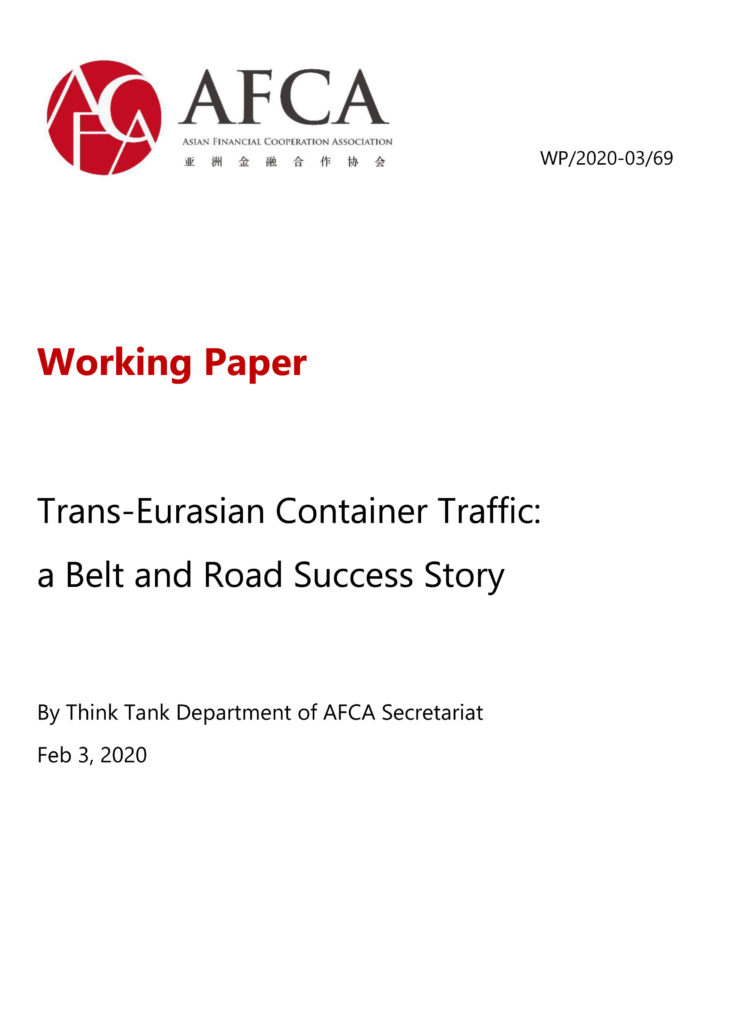
Trans-Eurasian Container Traffic: a Belt and Road Success Story
Vinokurov E. (2020) Trans-Eurasian Container Traffic: a Belt and Road Success Story. Asian Financial Cooperation Association (AFCA) Working Paper WP 20-03/69. AFCA: Beijing.
In this article I provide data and estimates for the spectacular growth of the volumes of trans-Eurasian container transit. Then I move to explain the underlying reasons and prospects. Finally, there are important remarks on the issue of financing, the role of China, and the role of international financial institutions.
China does a formidable job of financing the BRI-related infrastructure in countries around the world. An interesting feature of the trans-Eurasian container transit is, however, that so far countries along the route (Russia, Kazakhstan, and Belarus) upgrade their railway using their own financial resources. This is likely to change in the future, as Chinese financing is generally welcome, in particular for the capital-intensive construction of the high-speed railways. Besides, national and multilateral development banks should enter the game. Their cooperation among themselves and within the Belt and Road Initiative is vitally important. In includes such international financial institutions as the World Bank, ADB, AIIB, NDB, IsDB, EFSD and EDB but also, extremely importantly, such national institutions as the Chinese Silk Road Fund. They can provide long-term financing for the capital-intensive parts of the BRI story. International financial institutions provide project financing based on signed and ratified international treaties that do not depend on local legislation changes, which helps to mitigate certain risks. In the IFI-related context, we should also stress importance of the availability of subsidized lending as well as grants for technical feasibility studies. They are necessary in many occasions, in particular in Central Asia. Even if the results of such technical feasibility studies would be negative, it would still be money well spent.